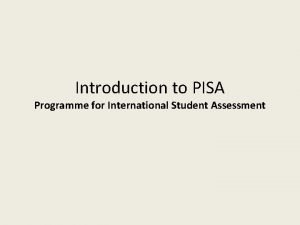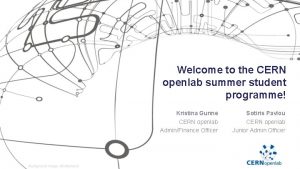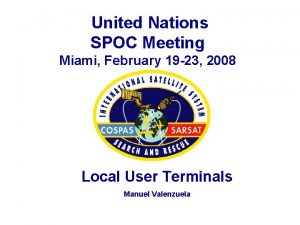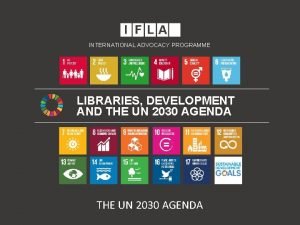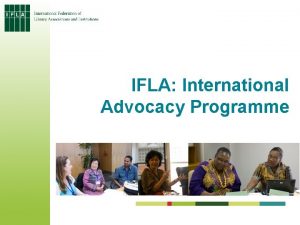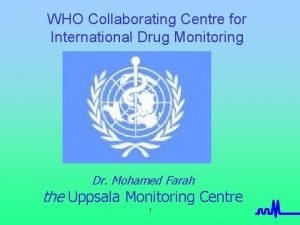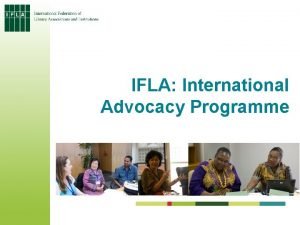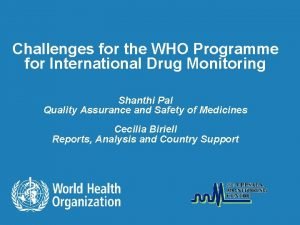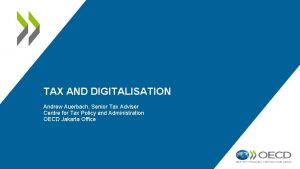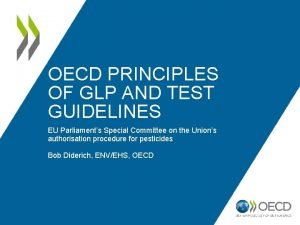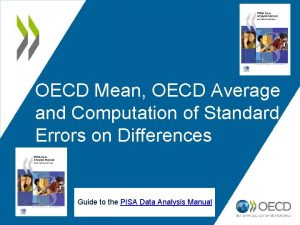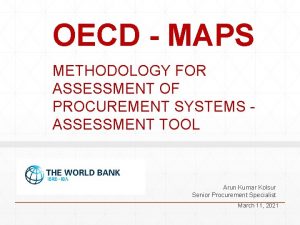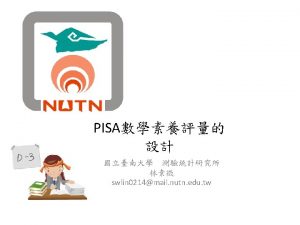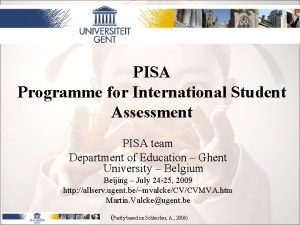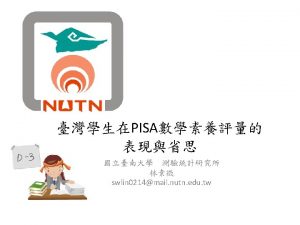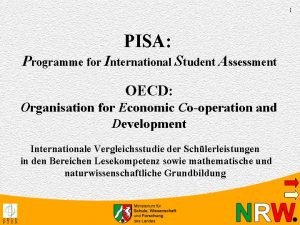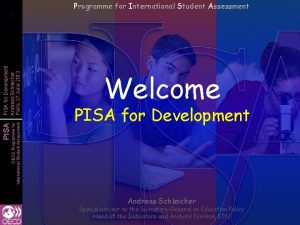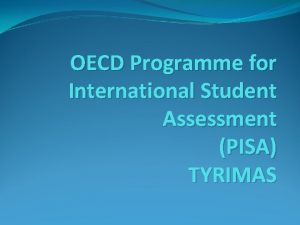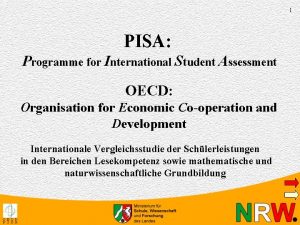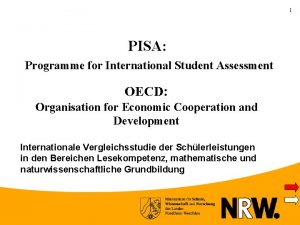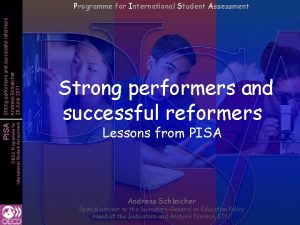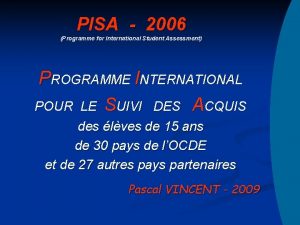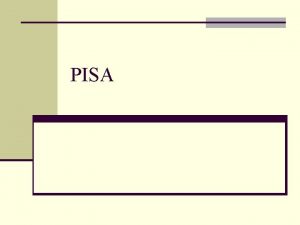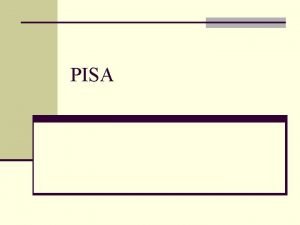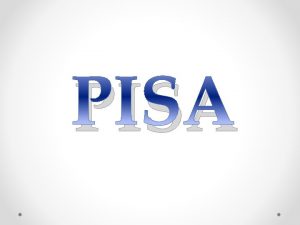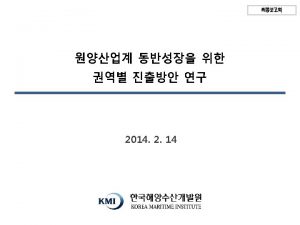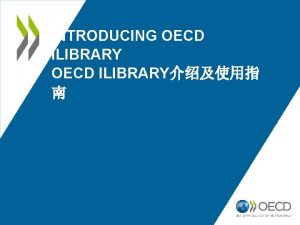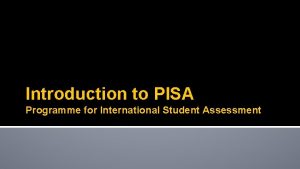OECD The Programme for International Student Assessment PISA





















- Slides: 21

OECD The Programme for International Student Assessment (PISA)

• What PISA is. • What PISA assesses. • Method of assessment. • Participating countries.

OECD’s Programme for International Student Assessment (PISA) What PISA seeks to accomplish How PISA works

In the dark… …all students, schools and education systems look the same… But a little light….

In the dark… …all students, schools and education systems look the same… But a little light…. …can show important differences….

(PISA) is an internationally standardised assessment that was jointly developed by participating countries and administered to 15 year-olds in schools.

What PISA Assesses • PISA assesses how far students near the end of compulsory education have acquired some of the knowledge and skills that are essential for full participation in society. • In all cycles, the domains of reading, mathematical and scientific literacy are covered , but in terms of important knowledge and skills needed in adult life.

Method of Assessment • Pencil-and-paper tests are used, with assessments lasting a total of two hours for each student. • The items are organised in groups based on a passage setting out a real-life situation. • A total of about seven hours of test items is covered, with different students taking different combinations of test items.

OECD’s Programme for International Student Assessment (PISA) Participating Countries

PISA 2000: 43 countries participated in the assessment.

PISA 2003: 41 countries participated in the assessment.

PISA 2006: 57 countries participated in the assessment.

PISA 2009

PISA countries in 2009

PISA 2009: 67 countries are participating in the assessment.

• How PISA works • Who benefits from PISA and who pays !?

Enjoyment of science OECD (2007), PISA 2006 – Science Competencies for Tomorrow’s World, Figure 3. 10

Concern for environmental issues OECD (2007), PISA 2006 – Science Competencies for Tomorrow’s World, Figure 3. 19

OECD (2007), PISA 2006 – Science Competencies for Tomorrow’s World, Figure 3. 4

References: • www. oecd. org • www. pisa. oecd. org email: pisa@oecd. org

Presented By • Loaloa Riad • Ingy Srour.
 What does pisa stand for
What does pisa stand for Cern openlab summer student programme
Cern openlab summer student programme Spoc diagram
Spoc diagram Twitterifla
Twitterifla International advocacy programme
International advocacy programme Who programme for international drug monitoring
Who programme for international drug monitoring International advocacy programme
International advocacy programme Who programme for international drug monitoring
Who programme for international drug monitoring Creative arts grade 8 test term 1
Creative arts grade 8 test term 1 Ems grade 9 term 3 case study
Ems grade 9 term 3 case study Revised programme of assessment 2020
Revised programme of assessment 2020 2020 revised curriculum and assessment plans grade 7
2020 revised curriculum and assessment plans grade 7 2020 revised curriculum and assessment plans
2020 revised curriculum and assessment plans Melinda brown oecd
Melinda brown oecd Oecd trade
Oecd trade Asta auerbach
Asta auerbach Oecd working group on bribery
Oecd working group on bribery Oecd trade facilitation indicators
Oecd trade facilitation indicators Andrew bell oecd
Andrew bell oecd Oecd glp guidelines
Oecd glp guidelines Oecd nations meaning
Oecd nations meaning Oecd maps
Oecd maps
